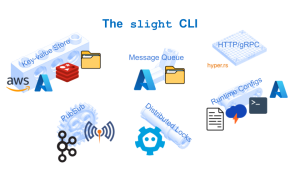
OpenTelemetry is a set of APIs, libraries, agents, and instrumentation that empower developers to observe, collect, and manage telemetry data (metrics, logs, and traces) from their services for improved reliability, understandability, and debuggability. The project is a merger of two formerly separate projects: OpenTracing and OpenCensus. By combining the best features from both, OpenTelemetry aims to offer a more unified, comprehensive, and efficient approach to observability.
The main goal of OpenTelemetry is to make telemetry a built-in feature of cloud-native software. It does this by providing a single set of APIs to capture and export telemetry data, eliminating the need to add instrumentation code to your services manually. This means you can spend less time setting up and maintaining observability, and more time developing your applications.
OpenTelemetry represents the next step in telemetry evolution. It provides a robust, standards-based solution that enables businesses to better understand and optimize their software systems. Given the increasing complexity of modern cloud-based systems, this kind of observability is becoming a necessity rather than a luxury.
Key Features of OpenTelemetry
Language-Agnostic Instrumentation
One of the key features of OpenTelemetry is its language-agnostic instrumentation. This means that it can support a wide range of programming languages. Whether you’re working with Java, Python, Go, or any other language, you can use OpenTelemetry to instrument your services. This flexibility makes it an excellent choice for diverse development teams and multi-language environments.
This language-agnostic approach enables developers to maintain consistency in how they collect and manage telemetry data across different services and languages. This consistency is crucial for gaining a holistic understanding of your systems and making informed decisions about optimization and troubleshooting.
Automatic and Manual Instrumentation
OpenTelemetry supports both automatic and manual instrumentation. Automatic instrumentation involves the use of libraries or agents that automatically instrument your code without requiring you to make any changes. This can significantly reduce the time and effort required to add observability to your services.
On the other hand, manual instrumentation gives developers more control over how they collect telemetry data. They can decide which parts of their code to instrument and how to handle the collected data. This level of control can be particularly useful for services with specific observability requirements or complex behaviors.
Integration with Existing Tools and Platforms
OpenTelemetry is designed to work seamlessly with a wide range of existing tools and platforms. Whether you’re using Prometheus for metrics, Fluentd for logs, or Jaeger for traces, you can integrate these tools with OpenTelemetry to create a comprehensive observability solution.
This integration capability also extends to cloud platforms. Whether you’re running your services on AWS, Google Cloud, Azure, or any other cloud platform, you can use OpenTelemetry to collect and manage telemetry data. This makes it a versatile solution for businesses with diverse cloud environments.
Customizable and Extensible Framework
Finally, OpenTelemetry is a highly customizable and extensible framework. You can customize how you collect and manage telemetry data to meet your specific needs. You can also extend the framework with additional features and functionality using plugins and other extensions.
This customizability and extensibility make OpenTelemetry a flexible solution that can adapt to a wide range of observability needs and requirements. Whether you’re a small startup or a large enterprise, you can tailor OpenTelemetry to suit your observability strategy.
Use Cases of OpenTelemetry in Cloud Monitoring
Application Performance Monitoring (APM)
OpenTelemetry is an excellent tool for Application Performance Monitoring (APM). It collects critical metrics related to application performance, such as latency, error rates, and throughput, providing valuable insights into how well an application is performing.
The first step in APM involves the instrumentation of an application to expose metrics. OpenTelemetry provides libraries that you can integrate into your application to automatically collect these metrics. This data can then be exported to an analysis tool of your choice for detailed examination and visualization.
The second aspect is the ability to track transactions across multiple services. With OpenTelemetry, you can trace the complete path of a request as it travels through various services in your application. This provides a holistic view of the performance of your application, enabling you to identify bottlenecks and optimize accordingly.
Distributed Tracing in Microservices Architectures
Microservices architectures have become increasingly prevalent in the world of software development. However, they also present a unique set of challenges when it comes to monitoring. The distributed nature of microservices makes it difficult to understand how individual services interact and contribute to the overall system behavior.
OpenTelemetry addresses these challenges by providing distributed tracing capabilities. With distributed tracing, you can visualize the path of a request as it travels through the various services in your microservices architecture. This allows you to identify where latency is being introduced or where errors are occurring.
Furthermore, OpenTelemetry’s distributed tracing capabilities are not limited to a single language or framework. It supports a wide range of languages and frameworks, making it a versatile tool for microservices monitoring.
Resource and Network Monitoring
Apart from application performance and distributed tracing, OpenTelemetry also supports resource and network monitoring. This involves tracking the usage of various system resources such as CPU, memory, disk, and network bandwidth.
Resource monitoring can help you understand how your application utilizes system resources and whether there are any resource-related bottlenecks affecting your application’s performance. Network monitoring, on the other hand, can help you identify network-related issues that may be impacting your application’s performance or availability.
OpenTelemetry collects these metrics and allows you to export them to an analysis tool for further examination. This provides a complete picture of your application’s behavior, from the performance of individual requests to the usage of system resources.
Best Practices Using OpenTelemetry for Cloud Monitoring
Here are a few best practices you can use to make effective use of OpenTelemetry for monitoring in a cloud computing environment.
Implement Effective Instrumentation
When implementing instrumentation with OpenTelemetry, there are a few key considerations. First, decide what data you need to collect. This could include application metrics, distributed traces, or system metrics. Once you know what data you need, you can then decide on the appropriate libraries to use.
OpenTelemetry provides a range of libraries that support different languages and frameworks. Choose the libraries that best suit your application’s environment. Once you have integrated these libraries into your application, ensure that they are correctly configured to collect the required data.
Utilize Context Propagation
OpenTelemetry provides context propagation capabilities, which are essential for distributed tracing. Context propagation involves passing information about a transaction from one service to another as the transaction travels through your system.
By utilizing context propagation, you can track the complete path of a request, even as it crosses service boundaries. This gives you a holistic view of your system’s performance, enabling you to identify bottlenecks and optimize accordingly.
To take full advantage of context propagation, ensure that all your services are properly instrumented to pass along context information. This includes both services that you own and third-party services that your system interacts with.
Optimize Data Collection and Export
Collecting and exporting data efficiently is critical when using OpenTelemetry for cloud monitoring. Without efficient data collection and export, you risk overwhelming your system with unnecessary overhead or missing out on important information.
OpenTelemetry provides a range of strategies to optimize data collection and export. For example, you can adjust the sampling rate to control how much data you collect. You can also batch data exports to reduce the overhead associated with sending data to your analysis tool.
Furthermore, OpenTelemetry allows you to filter and aggregate data before exporting it. This can help reduce the volume of data you need to export, potentially saving you storage and processing costs.
Establish Alerting and Anomaly Detection
One of the key benefits of cloud monitoring with OpenTelemetry is the ability to establish alerting and anomaly detection. By setting up alerts, you can be notified when certain conditions are met, such as when error rates exceed a certain threshold or when latency increases beyond a certain point.
Anomaly detection takes this a step further by automatically identifying unusual patterns in your data. This can help you identify potential issues before they escalate into serious problems.
To effectively establish alerting and anomaly detection with OpenTelemetry, it’s important to understand your system’s normal behavior. This involves analyzing your telemetry data to establish baselines for normal behavior. Once you know what normal looks like, you can then set up alerts and anomaly detection to notify you when your system deviates from this baseline.
Conclusion
In conclusion, OpenTelemetry is a powerful tool for cloud monitoring. Whether you’re monitoring the performance of your application, tracing transactions across a distributed system, or tracking resource usage, OpenTelemetry provides the capabilities you need. By implementing effective instrumentation, utilizing context propagation, optimizing data collection and export, and establishing alerting and anomaly detection, you can gain valuable insights into your system’s performance and ensure that it’s running optimally.
By Gilad David Maayan


